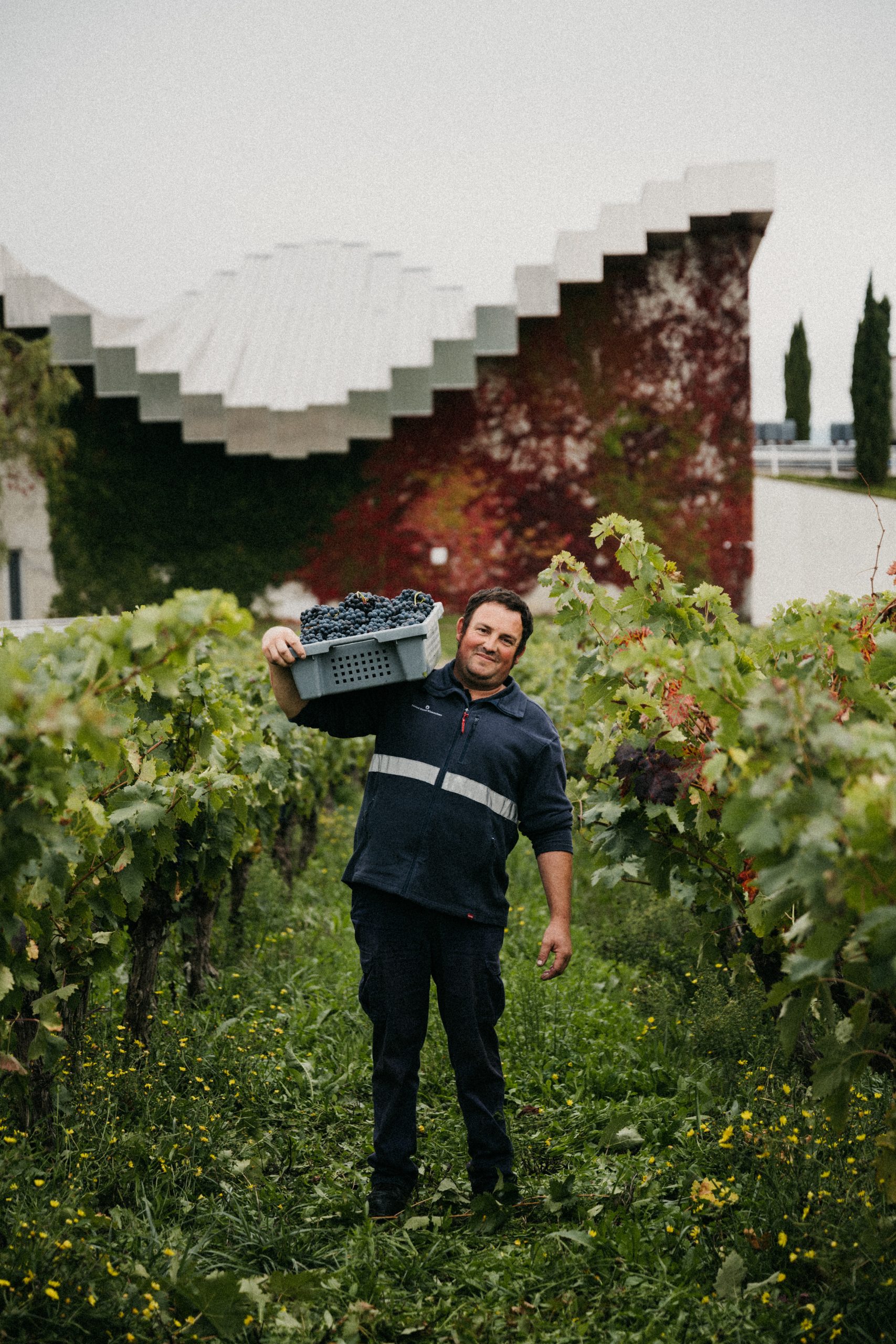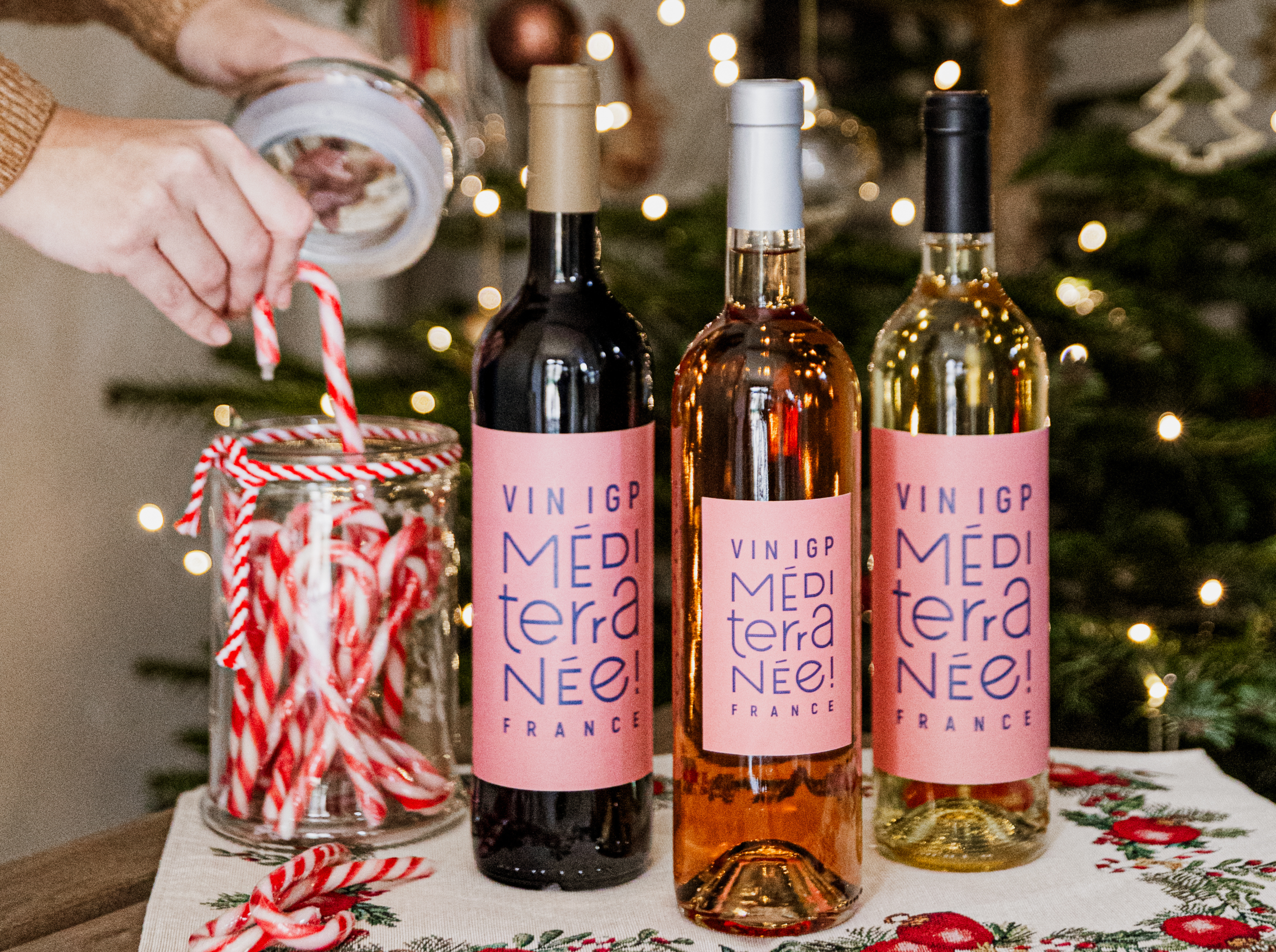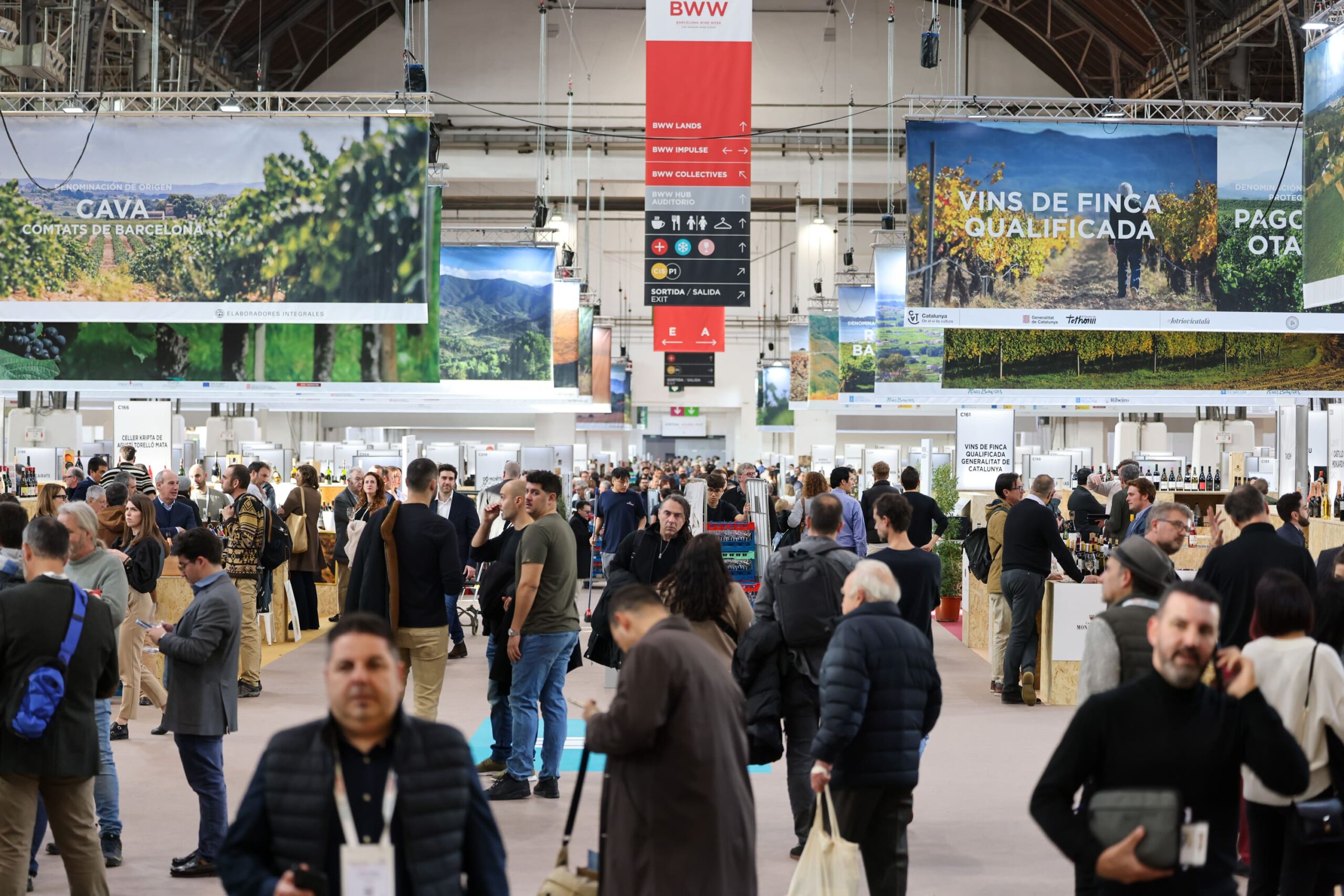Pessac-Léognan and Graves blanc 2023: tasting notes
db’s Bordeaux correspondent Colin Hay found much to be excited about in the white wines – after July’s overcast weather and impressive day-to-night temperature ranges during the harvest locked in freshness. The results, overall, are also rather more homogeneous than the reds, he writes.
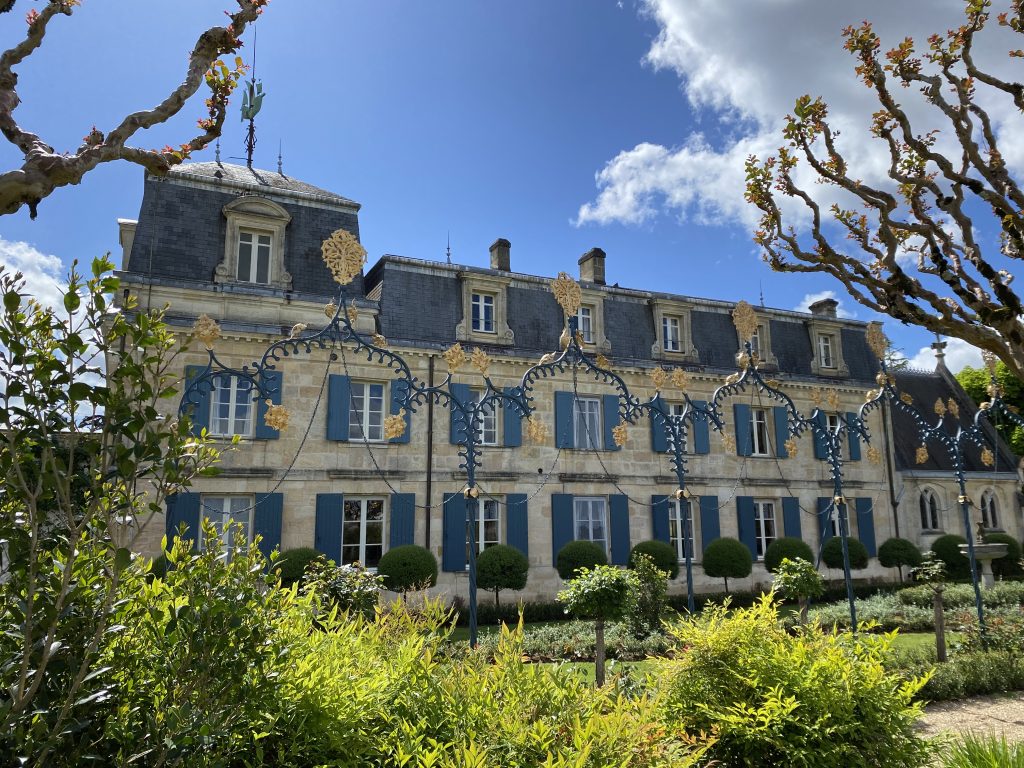
A note on the ratings
I have again decided to provide an indicative rating for each wine alongside the published comment. All such comments and ratings are necessarily subjective (they cannot be anything else when one thinks about it). I would urge you to look at the two together and, if anything, to privilege the comment over the rating. My aim is more to describe the wine in the context of the vintage, the appellation and recent vintages of the same and similar wines, rather than to judge the wine per se.
The ratings, of course, reflect my subjective evaluations and relative preferences between wines. Your palate is likely differ from mine. I hope that my comments give you at least enough information to be able to recalibrate my ratings and, in so doing, to align them more closely to your own palate. To give an example: if the idea of the ‘new classicism’ leaves you cold, you may well wish to discount the (typically high) ratings I have given to wines described in such terms.
2023, like both of its predecessors is, of course, a far from homogeneous vintage – and, consequently, my ratings span a considerable range (from the very top of the scale downwards). I see little interest, either for the consumer or the producer, in publishing very low scores. Consequently, I have decided not to publish scores for classed growths (or equivalent wines) that I have rated below 90 (here the range 89-91) and for crus bourgeois (or equivalent wines) that I have rated below 89 (here the range 88-90). Where no rating is published, the wine would have scored below these thresholds. Where my written assessment of the wine might also have proved unflattering to the property, I have simply chosen to publish neither the commentary nor the rating.
Finally, élevage is likely to be very important in determining the quality in bottle of these wines. I am no soothsayer and cannot predict how that will turn out (another reason for the use of banded ratings). But all en primeur ratings should be treated with caution and taken with a certain pinch of salt.
Graves (blanc)
Chantegrive (Graves; 60% Sauvignon Blanc; 40% Sémillon; 13% alcohol). Reliably fine, unpretentious and authentic Graves blanc that is very much flattered by the vintage. Pure, crisp, with lots of lime and white grapefruit sapid juiciness. Likely to be great value. Simple but very refreshing in its sapidity. Lovely, clean, bright, croquant and easy. 87-89.
Chantegrive Cuvée Caroline (Graves; 50% Sauvignon Blanc; 50% Sémillon; 13% alcohol). The additional Sémillon and and oak aging bring more complexity to this, and it’s really excellent – a ringer for classed growth Pessac at half the price (or thereabouts). Lots of citrus tension, which cuts the richness from the Sémillon. Bright, crisp, dynamic and engaging. A super wine, especially in this vintage. Lime and linden (tilleul) notes. 90-92+.
Clos Floridene (Graves). More oak that Chateau Reynon, more flesh and substance too. A little candlewax, even a suggestion of incense, grated nutmeg, white pepper and multiple citrus notes from mandarin through to pink grapefruit. Sappy. Juicy. Fresh. Finishes on grape skin and grapefruit pith. 88-90.
De Ferrande (Graves). Tasted twice , much better at the UGC. Peach, Granny Smith apple and confit lemon, confit melon too and a nice gooseberry note too. White melon fresh too. Clean, pure, tense and fresh with a nice grippy acidity almost like the granularity of tannins structuring the wine. So, quite pinched and then chiselled giving this interest in and through the mid-palate and elevating it in the process. This wine has progressed a great deal in recent vintages and in 2023 it is excellent. 88-90.
Rahoul (Graves). Very tight and fresh, despite quite considerable concentration. This really sucks in the cheeks with its fresh and dynamic acidity. Lemon and lime cordials, zest and a little white grapefruit. Precise, crisp, articulate. Simple but very accessible if a little strict. 87-89.
Pessac-Léognan (blanc)
Bouscaut (Pessac-Léognan; 41% Sémillon; 59% Sauvignon Blanc – I think, as the technical sheet adds up to 120%!; a final yield of 40 hl/ha; 13.5% alcohol; tasted at the UGCB press tasting at the Cité du Vin). Sadly there is no red here this year, but the quality of this must provide at least a little compensation. One notices immediately that this is less oaky than it often is or used to be. A little closed and intimate aromatically, but very distinct on the palate. Lime and lime zest, assorted white flowers, a little almond oil, linden, greengage. Decent concentration in the mid-palate but, crucially, this never risks becoming fat, so charged is it with fresh citrus acidity. A subtle change in style with rather less oak and more personality as a consequence. Intriguing, distinct and highly recommended. 91-93+.
Carbonnieux (Pessac-Léognan; 65% Sauvignon Blanc; 35% Sémillon; tasted at the UGCB press tasting at the Cité du Vin). Good things are happening here and this is further evidence of that. Oyster shell, iodine, homemade lemonade, citron pressé and lemon zest, peat, a slightly loamy note and a lovely crushed rock and flinty minerality. Incredibly intense, full and rich yet charged with energy on the palate – really impressively so. Hyper-fresh but with lots of density, almost viscous. Somewhat like a sauternes with all the sugar removed but the same density and volume and a similar fruit signature. Honey, assorted citrus elements, white flowers, camomile, confit melon. 92-94.
Clarté de Haut-Brion (Pessac-Léognan; 56.3% Sauvignon; 43.7% Sémillon; 13.4% alcohol; tasted at Haut-Brion; the second wine of both Haut-Brion and La Mission Haut-Brion). Almost Chablis-eseque (Dauvissat) in its candlewax note. Linden, lime, lime zest, fleur d’oranger. Incredibly fresh and lifted, aerial and so tense. Limpid, sapid, fresh and crunchy. A lovely stony minerality too. Excellent already and this is just the entrée. 93-95.
Clos Marsalette (Pessac-Léognan; 56% Sauvignon Blanc; 44% Sémillon; a tiny vineyard of just 1.5 hectares; a final yield of 56 hl/ha; 12.5% alcohol; tasted with Stephane and Ludovic von Neipperg at Canon La Gaffelière). Hyper-fresh. Good density and quite compact too. Charged with fresh citrus acidity. Tense and vertical. Bright. Pink grapefruit. Citron pressé. White peach. Sage. Confit melon too. Lovely balance. A pleasing natural sweetness on the clear and precise finish. 91-93.
Couhins (Pessac-Léognan; 90% Sauvignon Blanc; 10% Sauvignon Gris; certified organic). Now reliably exceptional and certainly that in this vintage. A most glorious nose (if I could capture it as a scent and carry around a bottle of it in my pocket as a pick-me-up I’d be, well, picked up quite a lot!). Fresh ginger, lemongrass, yuzu, lime, pink grapefruit, passionflower, confit lemon, maybe a little saffron (but it’s not as sweet as that perhaps implies). A magical texture in the mouth. It’s so soft at first that you expect it to be lighter and less substantial that it actually is, but there is in fact considerable depth and intensity to this and it reveals itself subtly. This is very dynamic over the palate and staggeringly sapid, with waves of fresh juice irrigating the taste buds. I love it. Really special; I think the best I have ever tasted from here. 93-95.
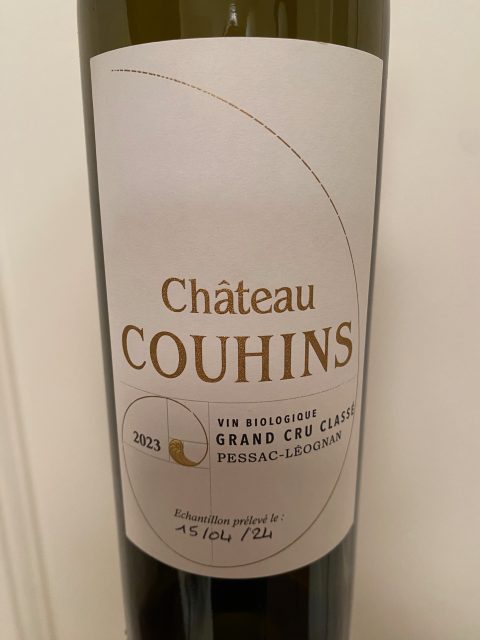
Couhins Lurton (Pessac-Léognan; 100% Sauvignon Blanc; 13.5% alcohol; tasted at the property with Jacques Lurton and Claire Dawson). 30% vinified in horizontal amphorae. Confit grapefruit. Lemon zest. Tarte au pamplemousse – does that even exist? Lemon meringue pie. Lily of the valley. This is tense, mega-crisp, bright and searingly vertical and aerial. It’s shimmering and crystalline too. So rich and intense, dense and compact with a tightly defined core. Incredible intensity. So beautifully tempered and tapering. Tense and nervous. So long and pure. Whetstone, crushed rock and rock salt minerality. I really love it. 93-95+.
De Cruzeau (Pessac-Léognan; 100% Sauvignon Blanc; 13% alcohol; tasted at the property with Jacques Lurton and Claire Dawson). Vinified in barrel, foudres and stainless steel. Apple, apple skin, confit apple. Exotic fruits too. Guava, mango, flint. Ginger. Citron pressé and white grapefruit too. Almost a Sauternes profile, but ultra-dry and crisply intense in its acidity. Very fresh and with lots of lift. Glassy and clear. Lovely intensity. Super value. 90-92+.
Domaine de Chevalier (Pessac-Léognan; 70% Sauvignon Blanc; 30% Sémillon; a final yield of 45 hl/ha; 14% alcohol; tasted at the UGCB press tasting at the Cité du Vin). Very classically ‘Chevalier’ aromatically. Very floral, with less oak presence than before. Gooseberry, greengage, nettle, copious small white blooms, a little walnut oil. On the palate this has a lovely delicate yet intense mouthfeel with great forward momentum. Lithe and, above all sinuous texturally with great length – like a winding river washing freshness downstream and with the acidity welling up from below to bring additional sapidity as it does so. A salmon river of a wine. Excellent. Lifted on the sublime finish. Very exciting indeed. 95-97.
Partner Content
De Fieuzal (Pessac-Léognan; 60% Sauvignon Blanc; 40% Sémillon; aging in oak barrels, around a third of them new). Aromatically very pure if, at first, a little understated and introvert. Aniseed, fennel, gooseberry, lime, mimosa and jasmine. Some blood orange with gentle aeration. Tense and taut with a fabulous and seamless combination of salinity, rocky minerality and viscosity. The density and concentration is very impressive and that, aligned with the intense sapidity and freshness of the citrus notes, allows this to be rich but vividly fresh at the same time. Lemon sorbet on the finish and just as refreshing at that makes it sound. Fabulous. 93-95.
De France (Pessac-Léognan; 80% Sauvignon Blanc; 20% Sémillon; a final yield, alas, of just 20 hl/ha; just 5% new oak; 13.5% alcohol; tasted at the UGCB press tasting at the Cité du Vin and at Belgrave). Sweeter aromatically than either Domaine de Chevalier or Carbonnieux, with more melon and confit melon notes, a little apricot too, even wild strawberries. This is rich and, in comparison with the very best, maybe lacks the vibrant freshness and crunch of the acidity that pulses through the vintage. But it’s very good and some will like its calmer, fuller, richer qualities. A pleasing salinity on the finish. 91-93.
La Garde (Pessac-Léognan; 93% Sauvignon Blanc on limestone; 7% Sémillon on gravel). Pretty, tense, intense and charged with fresh citrus notes and linden, grapefruit, elderflower, elderberry, a little apple blossom. Very lovely. Pure, precise, crystalline. Lithe and so incredibly tense, very pure fruited and yet with good density. Very expressive of the vintage. Brilliantly crystalline. The best yet from here. 92-94.
Haut-Brion (Pessac-Léognan; 58.1% Sauvignon Blanc; 41.9% Sémillon; pH 3.2; aging in oak barrels, 40% of which are new). Richer and deeper than La Mission, more aromatically intense and maybe, because of that, a touch less aerial. Fewer fireworks, greater intensity in a way. Confit grapefruit, confit lemon, mandarin, satsuma, green tea. A little more floral than La Mission Haut-Brion. White flowers. Linden, jasmine. But it’s actually a little less exotic. The waves of freshness are fewer than La Mission, too, but more intense – more the Atlantic breakers bringing tranquillity between each explosion of freshness. That contributes to the long sense of taper towards the finish as if the water is being drawn slowly back to the Ocean. Grand scale wine. Very different to its stablemate in its form and mouthfeel but staggering fresh given its density. So poised and balanced. 97-99.
Larrivet Haut-Brion (Pessac-Léognan; 95% Sauvignon Blanc; 5% Sémillon; a final yield of 33 hl/ha; 13.6% alcohol; tasted at the UGCB press tasting at the Cité du Vin). Very classically ‘Pessac’ but at the same time very true to its more recent style. Iodine and seashell, but not quite as expressively so as, say, Carbonnieux. Wild strawberry, though just a hint, yuzu, mandarin and satsuma, maybe a little frangipane note too and nettles. White peach. Cool and glacial in the mid-palate, very calm and relaxed in a way, with greater luminosity and clarity. Plunge-pool texture. Relaxing and very harmonious, with a lovely citron zest note building on the finish. Very clean. 92-94+.
Latour-Martillac (Pessac-Léognan; 60% Sauvignon Blanc; 40% Sémillon; a final yield of 53 hl/ha; 13% alcohol; tasted at the UGCB press tasting at the Cité du Vin). A very pure citrus-charged nose, quite radiant and bright, crisp and aerial. Fleur de sel encrusted lemon, lemon zest, a twist of lime and white grapefruit. Mimosa, just a little; flint. Fluid, lithe and energetic with a glorious zesty freshness that disrupts the tranquil cool of the glacial mid-palate bringing energy, interest and great sapidity. Superb. Beautifully composed and lovely texturally. Gracious. 92-94+.
La Louvière (Pessac-Léognan; 100% Sauvignon Blanc; a final yield of 49 hl/ha; 13.5% alcohol; tasted at the property with Jacques Lurton and Claire Dawson). Fermented largely in 600 litre demi-muids. From 4 rather different terroir types. White melon, confit lemon, tarte au citron, mandarine zest and rind. Fresh ginger. Lemongrass. Greengage, gooseberry, white and pink grapefruit. Lovely, vibrant and extremely zesty, lots of energy. Excellent. Perhaps a little more direct than, say, Latour Martillac. More vibrant and disruptive, more energetic and perhaps little less elegant in a way for that. 92-94.
Malartic-Lagraviére (Pessac-Léognan; 80% Sauvignon Blanc; 20 Sémillon; a final yield of 49.5 hl/ha; 13.2% alcohol). Easy to pick blind in a vintage in which the terroir traits of each wine are very transparent. That signature candle wax and fleur d’oranger note, a little white almond and assorted citrus notes – more lime than lemon perhaps, a little peach that we pick up again in the mid-palate. Very pure, quite rich but wonderfully sapid and charged, like many, with up-currents of zestiness from below. Glacial, cool with a gracious plunge-pool texture. 93-95.
La Mission Haut-Brion (Pessac-Léognan; 65.3% Sauvignon Blanc; 34.7% Sémillon; pH 3.2; tasted at Haut-Brion). Zingy and zesty with 51 shades of lemon each vying for attention. Lemon – pure, confit and pressé, lemon meringue pie with some of the lift and levity of the meringue (if none of its sugar). Aerial. Subtle white nectarine, peach, linden, jasmine, passionflower. So complex with exotic fruit notes – guava and passionfruit – but we return always to the citrus. So dynamic, juicy, sapid and fluid. Exciting. Waves of alternating freshness and a certain pinch from the acidity. So vertical. Exquisite. Reverberating. Less poised than Haut-Brion because it’s so dynamic and disruptive, but utterly captivating in its vivid and elemental dynamism. 96-98.
Olivier (Pessac-Léognan; 80% Sauvignon Blanc; 20% Sémillon; a final yield of 45 hl/ha; 13.3% alcohol) Quite creamy, with copious white flowers, nettle, wild herbs, peach skin and a little apricot. On the palate this is ample and quite rich, the acidity not so much welling up from below as entering between the layers of the silkily-textured fruit. Iodine and sea spray on the finish. Very composed and tranquil, but without the energy of some. But still excellent. 92-94.
Pape Clément (Pessac-Léognan; 60% Sauvignon Blanc; 35% Sémillon; 4% Sauvignon Gris; 1% Muscadelle; a final yield of 48 hl/ha). An easy pick. Big, plump, rich and exuberant in its style. Aromatically this is quite explosive. Garden blooms, apricot, peach and white nectarine, almond and frangipane. The acidity here is very well incorporated into the mid-palate and well distributed along the central spine. Very ample and generous, dense too, giving this a cool composed form in the mouth. A lovely plume of clean citrus refreshes the finish and cuts any residual richness. A distinctive style, but it works. 93-95.
Picque Caillou (Pessac-Léognan; 100% Sauvignon Blanc; a final yield of 50 hl/ha; 13% alcohol). Slightly smoky but with a very pure citrus-charged aromatic profile; a little jasmine note too. Tight and with a narrower frame than others, but that merely accentuates the sense of concentration and mid-palate density. A lovely fleur de sel or even oyster shell salinity. Very mineral. Lovely. 92-94.
De Rochemorin (Pessac-Léognan; 100% Sauvignon Blanc; 13% alcohol). Only 1km from La Louvière, the same team and varietal, and yet fundamentally different. More closed. Less exotic. Brioche. Toasty notes. Fifty shades of citrus – lemon and grapefruit. Confit lemon. Confit grapefruit. Lemon meringue pie. Super. Better even than the 2021. Ginger. Jasmine. Mimosa. Mirabelle. Super sapid and wonderfully quaffable and fresh. Excellent. 91-93+.
Smith Haut Laffitte (Pessac-Léognan; 90% Sauvignon Blanc; 5% Sauvignon Gris; 5% Sémillon; a final yield of 36 hl/ha). Honeyed and utterly beguiling. Very floral – gladioli and hyacincth! A great fruit complexity, and a lovely walnut oil nuttiness too. Rich, ample, broad-shouldered and seductive. Quite distinctive. We could almost be in Sauternes aromatically, yet this is 100 per cent crisp and dry on the palate. Confit melon, beurre au fleur de sel, roasted almonds, almond oil, frangipane, peach, nectarine, guava and passionfruit and then, from below, orange and lemon zesty notes. Incredibly dense and impressively vibrant for a wine so rich. A singularity. 95-97.
Late addition:
De Fieuzal (Pessac-Léognan; 60% Sauvignon Blanc; 40% Sémillon; aging in oak barrels, around a third of them new). Aromatically very pure if, at first, a little understated and introvert. Aniseed, fennel, gooseberry, lime, mimosa and jasmine. Some blood orange with gentle aeration. Tense and taut with a fabulous and seamless combination of salinity, rocky minerality and viscosity. The density and concentration is very impressive and that, aligned with the intense sapidity and freshness of the citrus notes, allows this to be rich but vividly fresh at the same time. Lemon sorbet on the finish and just as refreshing at that makes it sound. Fabulous. 93-95.

